Ryukyu Traditional Arts You Should Know

Tokyo Terry
Posted on July 22, 2024
Share:
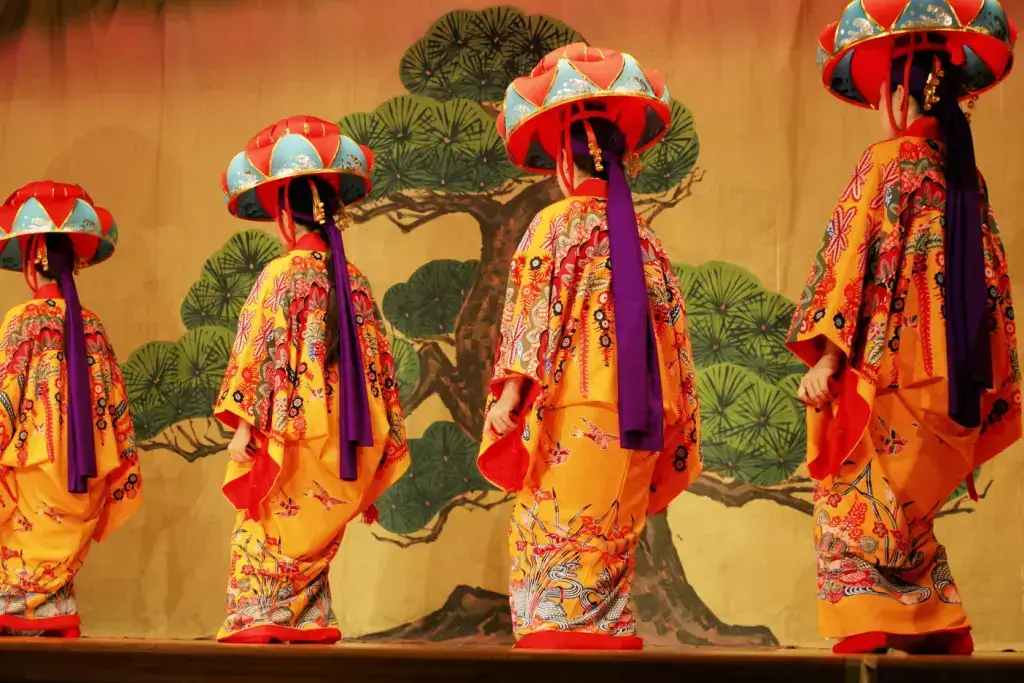
Okinawa is a popular destination in Japan. However, these volcanic and coral islands between Kyushu and Taiwan also have a less popular name—the Ryukyu Islands. In the 5th century, they were called the Southern Islands by the Japanese and the Eastern Islands by the Chinese.
They were their kingdom with a unique culture and language. The Chinese, in particular, visited often and maintained a relationship with the inhabitants for centuries. Over the next few centuries, the Ryukyuans played a central role in Asia’s economy. And they became adept at learning skills from others and combining them with their traditions. Some of these Okinawan arts are now practiced across the globe.
Where does the name “Ryukyu” come from?
Before it became part of Japan, Ryukyu had very close ties with China. The Chinese shared their technological advancements with the kingdom and assisted with its development. The most important of these were ships. At the time, there were three major shipping routes in the region. The islands’ central location between the Asian mainland, Japan, and Southeast Asia made them the perfect transportation hub.
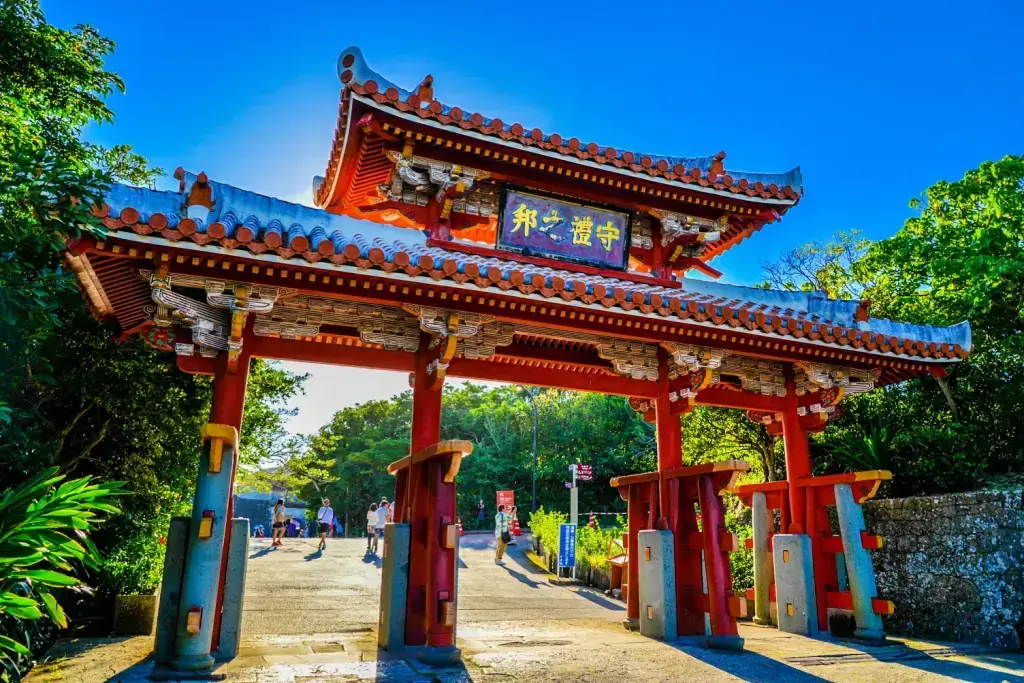
They became an important stopover point when exchanging goods in the region. For almost two centuries, silver, iron, ceramics, wood, and even ivory from India all passed through the kingdom’s ports. However, piracy and Portuguese traders soon affected this success. Ryukyu became less and less influential until Japan finally invaded it. It remained somewhat independent until it officially became part of Okinawa in the 1800s. The culture was almost lost when Japanese people started moving there and mixing with the inhabitants. Despite this, the region’s legacy and customs are part of Okinawan culture.
Bingata
This traditional method of dyeing fabric originated centuries ago. The oldest surviving bingata fabric dates back to the 15th century. It was traditionally worn during festivals and folk dance performances. Ryukyu traders encountered many cultures on their travels, so bingata combined Indian, Chinese, and Javanese techniques.
After the kingdom became part of Japan, less trade with other countries limited access to dyes. The art form was saved by sending people to study dying methods in other countries and developing new techniques. It is still popular today in the Okinawan islands.
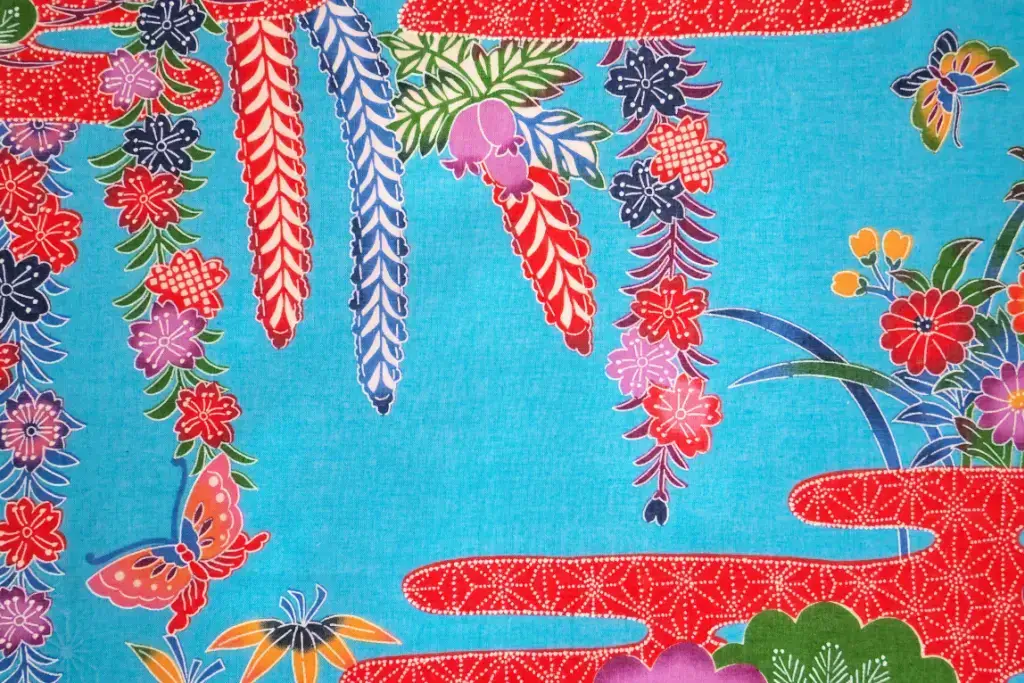
Bingata designs use colorful images of flowers, sea life, and other local nature. One piece of fabric can have as many as 18 different colors. Red was (and still is) the most important color. Initially, it was imported from China in the form of cinnabar, a red stone containing mercury.
There are many steps involved in creating this fabric. First, a stencil of the design is cut out of paper. Next, this is used to transfer the pattern to the material. This pattern is then also painted by hand to highlight and emphasize details. Because of the work involved, only royalty could afford it in the past. Even today, a silk kimono decorated using this method can cost more than 100,000 yen.
Are you looking for great snacks from Okinawa? Check out Sakuraco! Sakuraco delivers traditional Japanese snacks, teas, and sweets from local Japanese makers directly to your door so you can enjoy the latest treats directly from Japan!
Ryusou
Sometimes called ushinchi in the Okinawan language, this is the traditional dress of the Ryukyuan people. Initially, the color, fabric, and design indicated the wearer’s status, so it was only worn by royalty and nobles. The working class wore knee-length ryusou, while the upper classes wore ankle-length. True Ryukyu fashion is a mix of the Han Chinese hanfu, Japanese kimono, and local clothing styles.
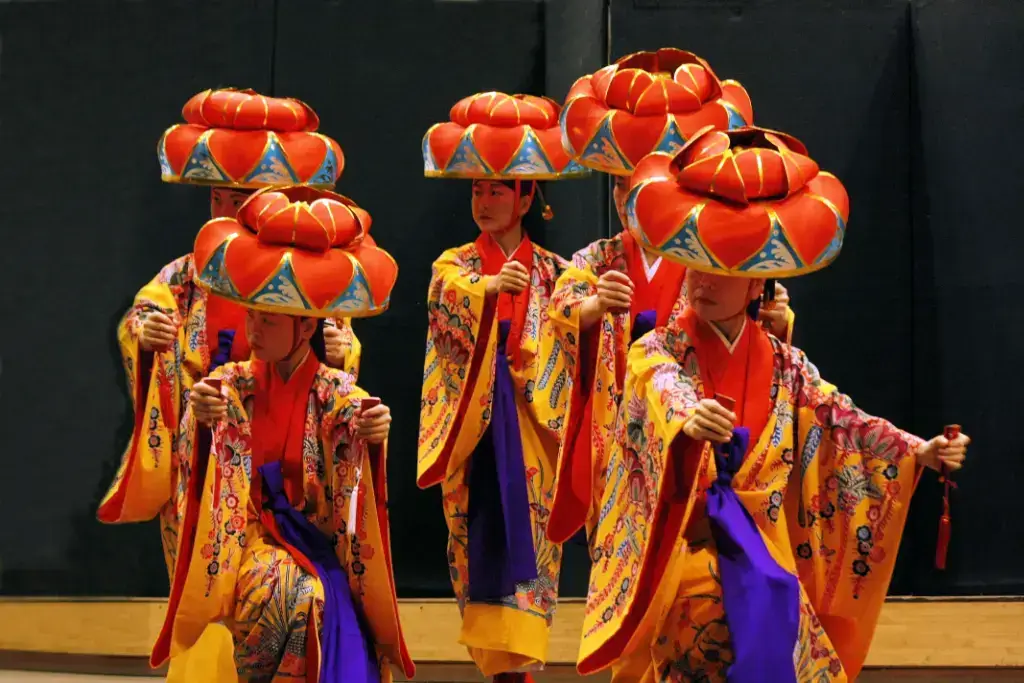
Okinawa’s climate is the main reason for many of the differences. The sleeves are wider than kimono sleeves, allowing better ventilation in hot weather. In addition, a breathable blend of hemp and banana fiber known as bashofu was often used instead of cotton or silk. This formal attire is still worn at weddings and coming-of-age ceremonies. Men wear a narrow belt around the waist (like a kimono obi) to secure their ryusou. Women use a pin instead and usually wear a colorful bingata design.
Yachimun
Okinawa’s history of learning from other cultures is also reflected in its traditional pottery, yachimun. There are two main types – unglazed (ara yachi) and glazed (jo yachi). After China introduced it in the 10th century, the Tsuboya district in Naha became the production center.

This pottery is still made in the area. Tsuboya Yachiman Street is a popular tourist attraction in the city. Its cobblestone streets, workshops, and yachimun museum attract thousands of visitors every year. Kitchenware and burial urns are trendy souvenirs. But Okinawan guardian statues (shisha) are, by far, the most sought-after. These “lion” statues can be found at entrances throughout Japan, protecting homes from evil spirits. In 1985, Jiro Kinjo, a Tsuboya potter, became Japan’s first Okinawan named a Living National Treasure.
Ryukyuan Dance
There are three types of Ryukyuan dance: “traditional” (zo) and “creative.” However, these can both be further divided into many categories. Zo became popular during the 1700s as a stage performance to entertain visiting Chinese officials. This style of dance contains four types. Older married couples perform Rojinodori while boys perform Wakashuodori. Young men dance nisaiodori to show their courage, and women dance onnaodori.

The women wear colorful, floor-length bingata and elaborate headwear. They dance and move slowly, using shamisen, flute, drums, and singing. Zo became even more popular in the 1800s when the Ryukyuan clan system was replaced with the Japanese prefectural system. The music and culture of common people then spread throughout all levels of society. “Creative” dance is the modern version of this art. New dances of this type are still being created today.
Karate
There are many different styles of karate, all a fusion of Ryukyuan and Chinese martial arts. Some focus on strikes, kicks, and throws against opponents (kumite). Others teach ground wrestling, and submission holds. Techniques are also practiced in idealized situations without an opponent. These series of moves are called kata.
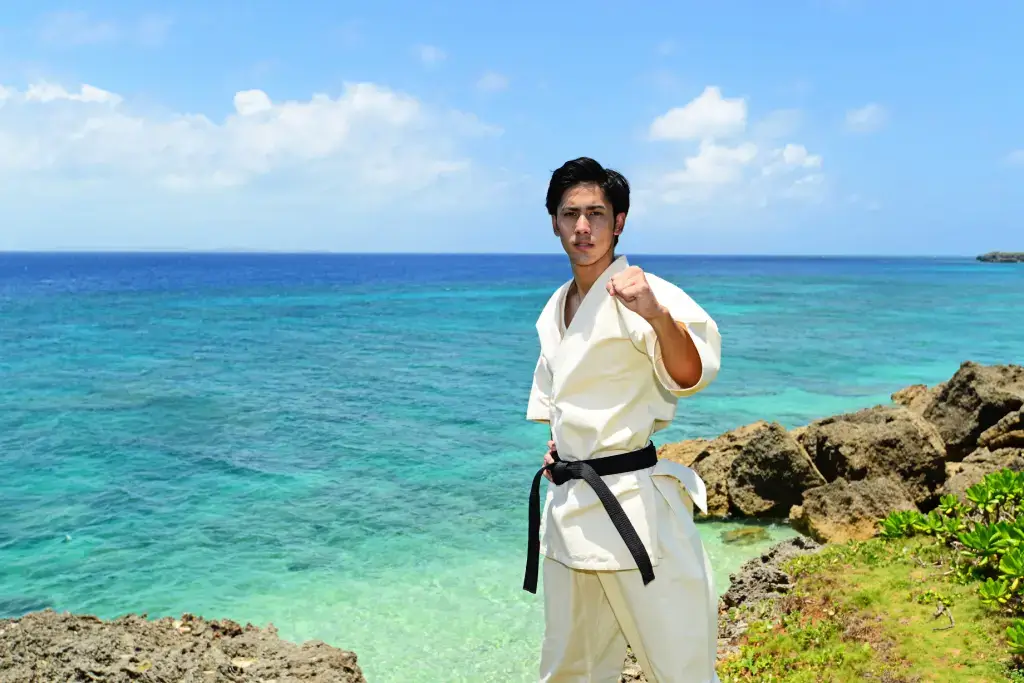
There are many karate schools, but most of these have evolved from the four main styles. Shito-ryu specializes in powerful strikes. Goju-ryu, combines hard striking with soft movements. Shotokan-ryu favors speed and accuracy, while Wado-ryu teaches escape tactics. This art requires discipline, self-control, and mental and physical toughness. When it became illegal to carry weapons in Japan, it was taught and studied in secret as form of defense. It has since become popular all over the world.
Why should I learn about the traditional Ryukyu arts?
The Ryukyu people’s sailing and trading skills helped a small nation surrounded by larger, more powerful territories persist for centuries. Their willingness to learn new skills and incorporate them into their culture has created beautiful art forms that continue to evolve. These Okinawan arts are an essential part of Japanese history, especially for the people of the Okinawa region.
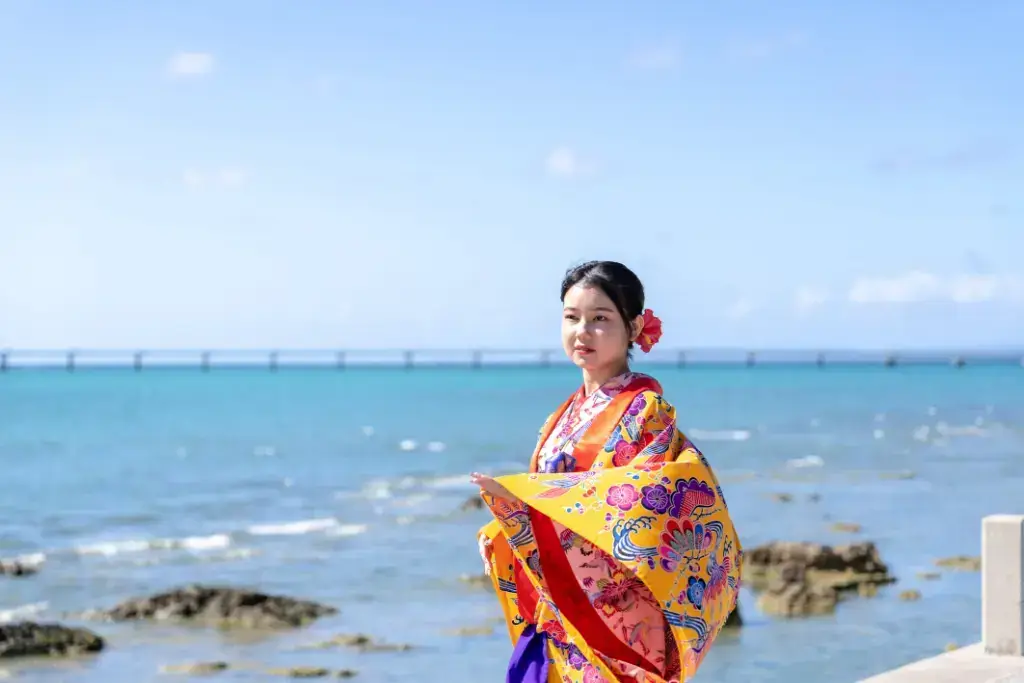
Learning about them shows an appreciation of Ryukyuan’s resilience and creativity. Supporting these arts also helps preserve a unique heritage and remarkable traditions almost lost to time. Have you ever visited Okinawa? Do you know of other Okinawan arts or places where you can learn more about them? Share your experiences and tips in the comments below!

Discover authentic flavors with Sakuraco
Get Sakuraco 

Discover authentic flavors with Sakuraco
Get Sakuraco 
Related Articles

Steam Train in Shizuoka: Riding the Oigawa Railway
For travelers who love history, beautiful views, and cozy retro vibes, this steam train is one of Shizuoka’s most charming treasures, with some of the best views. If you want to know more about this train, keep reading below!

Nara Japan: The Amazing Legend of the Sacred Dragon
In Japanese culture, dragons are spiritual beings that represent strength, prosperity, and a harmonious balance with the natural forces. Nara, Japan, has a unique story associated with sacred ponds and revered shrines throughout the region.

Nambu Tekki: Morioka’s Amazing Iron Craft
In the historic city of Morioka, Iwate Prefecture, a craft with over 400 years of history continues to captivate with its rustic beauty and practical charm. Nambu tekki, or Nambu cast iron, refers to traditional ironware, such as teapots, kettles, and decorative pieces, that embody the spirit of Tohoku craftsmanship.

Ebisu: The Cheerful Guardian of Luck and Prosperity
Religion in Japan involves a dizzying array of spirits and beings. These gods are inspired by ancient tales and used to symbolize nature’s bounty. However, they also profoundly impact daily life and are often sought out for help in challenging times



